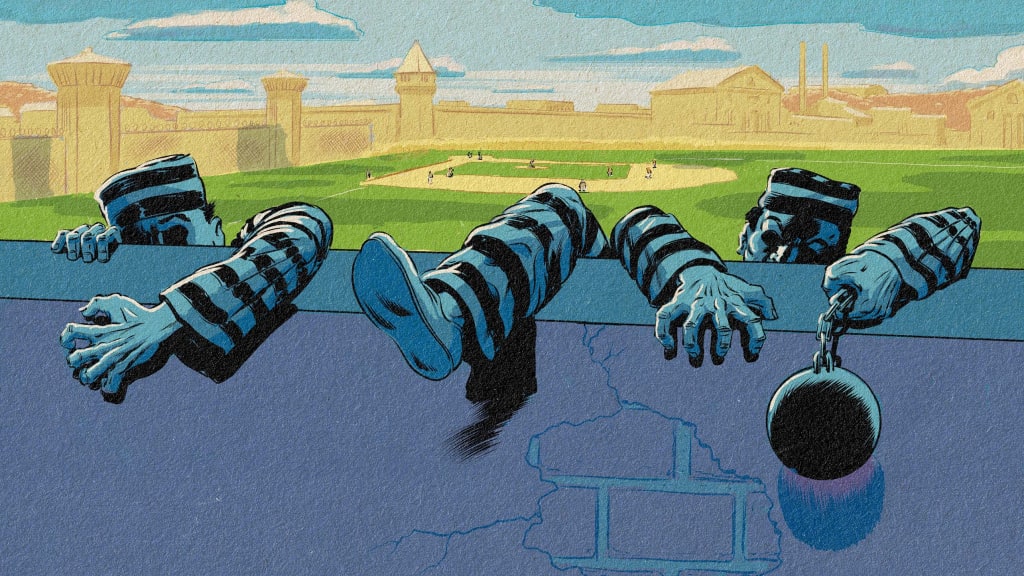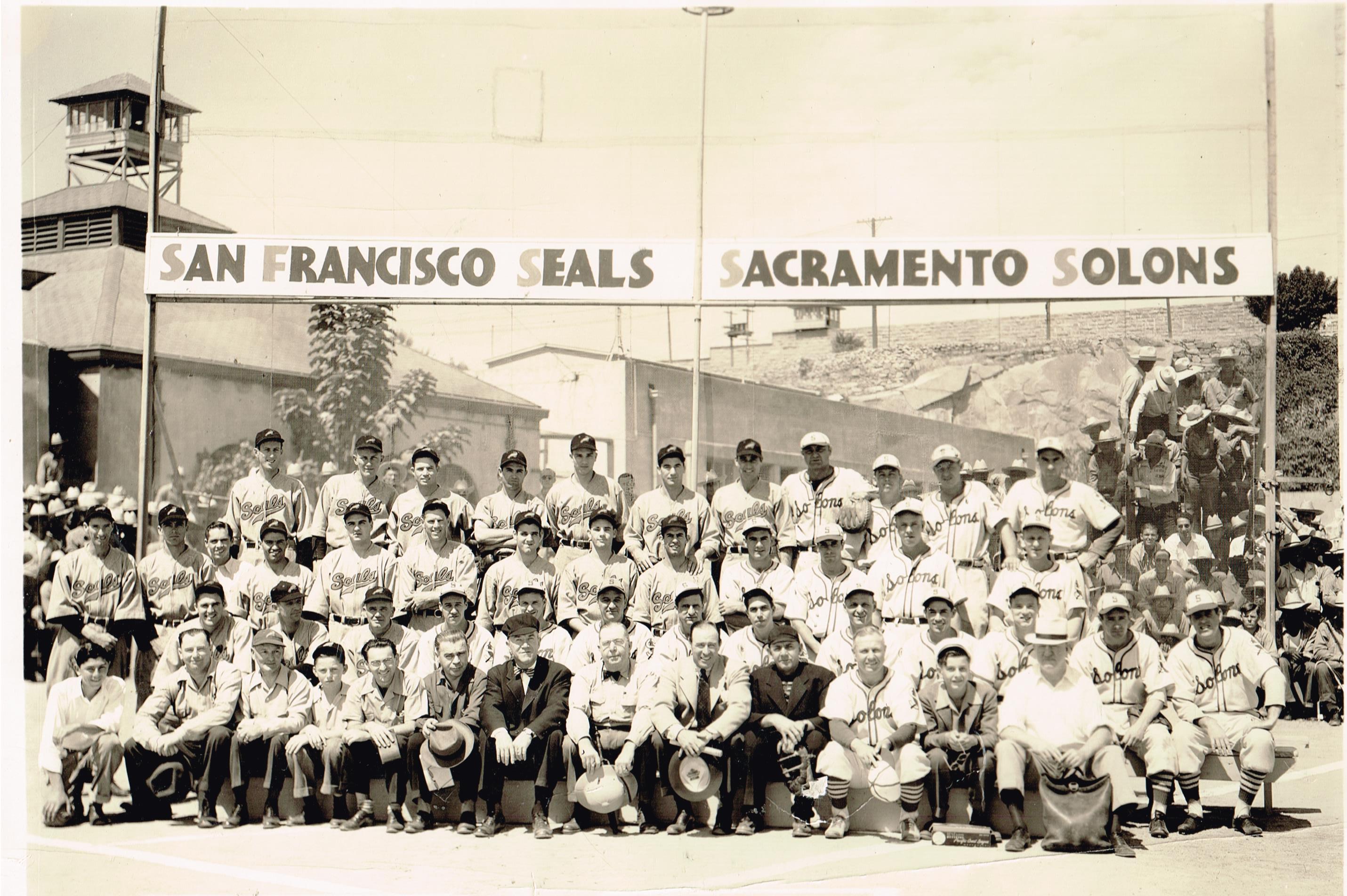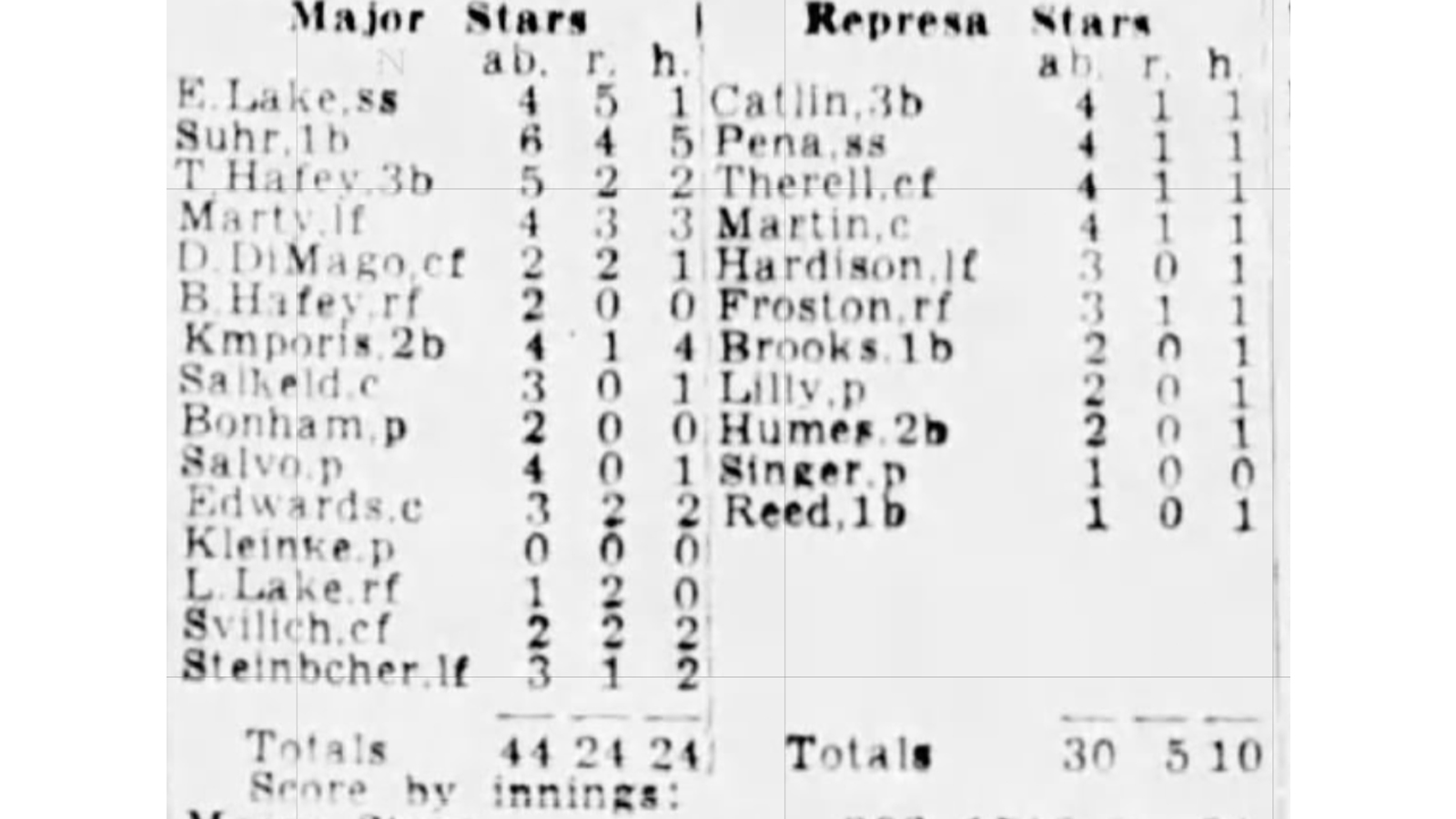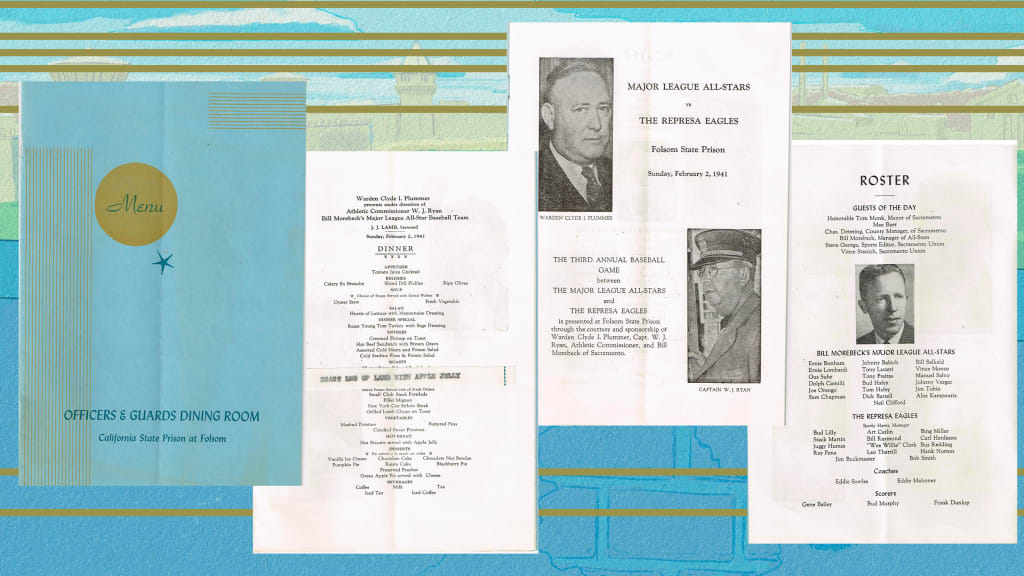
A version of this story first ran in February 2022.
Hall of Fame catcher Ernie Lombardi had plenty of practice catching thieves on the bases, but he probably wasn't prepared for what happened on Feb. 8, 1942, when he and the Dom DiMaggio All-Stars walked into Folsom Prison for the annual All-Stars vs. prisoners baseball game.
The game itself was nothing new. Baseball teams -- from local town clubs all the way to barnstorming Major Leaguers -- had regularly visited the jail to stage games in the prison yard. Folsom started playing town ball teams as far back as the 1880s, with MLB players coming through beginning in 1913. New York's Sing Sing started hosting games in 1914 -- Babe Ruth visited in 1929 -- and San Quentin has been playing baseball for nearly a century.
But this day was a little different, and not just for the talent on hand: A prison break would interrupt the game.
Heavyweight boxers-turned-showmen Buddy and Max Baer put on a show down the sidelines before the game got underway. This was no normal baseball grandstand, though, and the incarcerated spectators were nearly right on top of the action. That meant there had to be a unique plan in case of any issues in the yard.
"[The players would] get instructions: if you hear this alarm, you go over -- I don't know if this was exactly the place -- but if you go over in the left-field corner, we'll get you out," Alan O'Connor, a Sacramento baseball historian, said in a recent phone call.

Dom DiMaggio put himself in the lineup, batting fifth and playing center field. Cardinals utility man Eddie Lake, former Pirates slugger Gussie Suhr and Phillies outfielder Joe Marty helped fill out the lineup card. While multiple newspaper reports put Lombardi there, he didn't make it into the game -- perhaps because he had just been traded to the Boston Braves that day and was furious about it, exclaiming "Not Boston!" when he was informed of the move. The Yankees' Ernie Bonham got the nod to take the slab first to face the Represa Stars, a team featuring the best players inside Folsom's walls.
Not surprisingly, the Major Leaguers cleaned up. DiMaggio laced a triple and scored two runs, Suhr picked up five knocks and Marty rapped out three hits en route to a 24-5 lead after seven innings. While the bats may not have gone easy on Folsom pitchers, it appears that the big league hurlers weren't throwing their best stuff: Every Represa player picked up a base hit.

With seven innings in the books, the game was brought to a sudden halt as guards discovered that two inmates had taken this opportunity to escape. (Most reports say the jailbreak happened during the game, though some say the game was delayed two hours for the search, necessitating a shorter contest.) Elvia E. Mead and Philip Gardner, jailed for first-degree murder and burglary respectively, "broke loose from the lower prison yard by cutting a hole in the fence," the United Press reported. "They jumped into the power canal, swam across the swift stream and pulled themselves up the bank with prison-made ropes."
Unfortunately for the duo, they didn't make it far. Gardner failed to make it past the final guard post when he was snagged, while Mead was found "six miles away at Mississippi Bar by three small boys." (Sadly, the article makes no mention of why three boys were in the bar at the time.)
While the duo's great escape caused an early end for this ballgame, there was lots more to come. The prison yard hosted baseball until 1965, when the field was paved over with concrete, and the prison team even joined the local men's leagues starting in the late '40s.
"It was the Rural League for a while and then for about 10 or 12 years, they were in the Sacramento County League," O'Connor said. "And here's the local joke: they only played home games."
Though the big league players didn't earn money for these All-Star contests, unlike their other offseason barnstorming events -- treating it more as part of their civic responsibility -- that didn't mean there were no perks for choosing to walk inside the prison walls.
"Back in the day, Folsom was run like a farm. They had crops," O'Connor said. "The guys that played there in the '50s said they would give them this great feast afterwards from stuff that was grown there. They loved to go up there for a game and then eat afterwards."

While most Major Leaguers would come to the prison for a few hours before heading back out on the road, there was one who called Folsom home: St. Louis Browns pitcher Ralph Schwamb. After being convicted of murder, Schwamb was first sent to San Quentin before heading to Folsom. While there, he became the prison yard's ace pitcher -- even making a comeback attempt with the Hawaii Islanders after being released in 1961.
"Local guys who would go out there to play would say, 'Jesus, here's a Major Leaguer,'" O'Connor said. "'We can't touch him.'"
